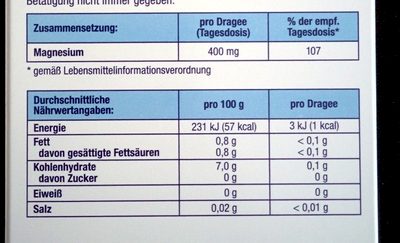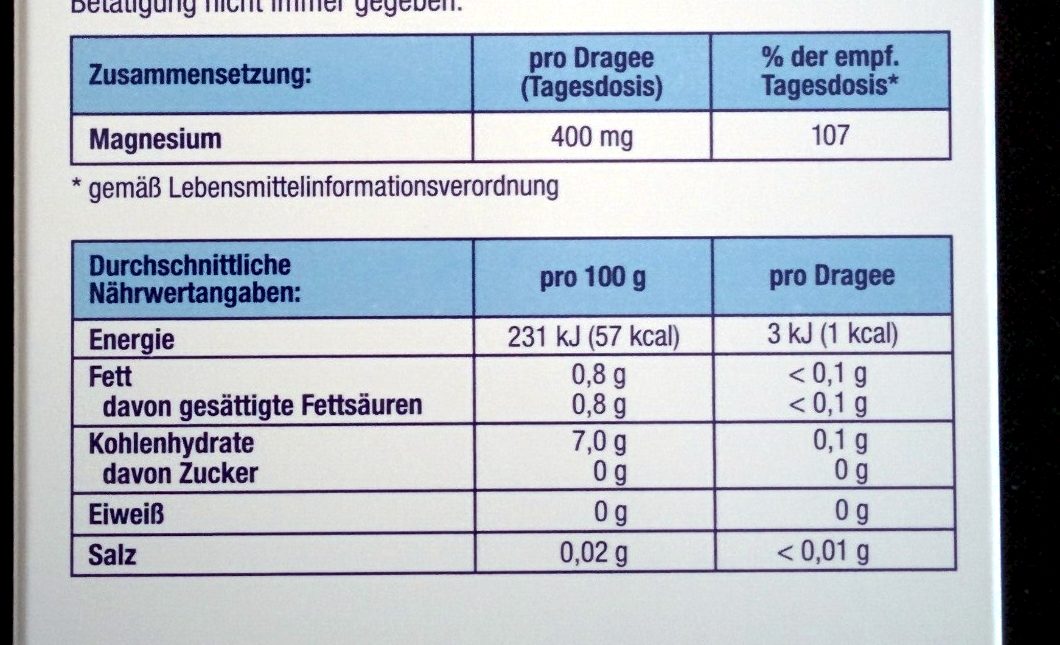Magnesium Dragees 400 - Das gesunde Plus - 60 Dragees (59,8 g)
This product page is not complete. You can help to complete it by editing it and adding more data from the photos we have, or by taking more photos using the app for Android or iPhone/iPad. Thank you!
×
Barcode: 4070355764830 (EAN / EAN-13)
Common name: Nahrungsergänzungsmittel mit Magnesium und mit Süßungsmittel
Quantity: 60 Dragees (59,8 g)
Packaging: Metal, Plastic, Recyclable Metals, Aluminium, Cardboard
Brands: Das gesunde Plus
Categories: Dietary supplements
Labels, certifications, awards:
No gluten, FSC, FSC Mix, Made in Germany, No lactose, de:FSC C123439

Traceability code: FSC-C123439
Stores: Dm
Countries where sold: Germany
Matching with your preferences
Health
Food processing
Additives
Ingredients analysis
Environment
Packaging
Transportation
Report a problem
Data sources
Product added on by hangy
Last edit of product page on by packbot.
Product page also edited by roboto-app.








